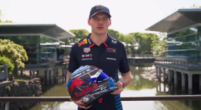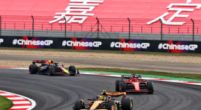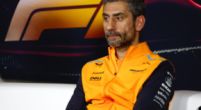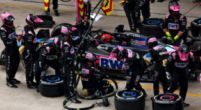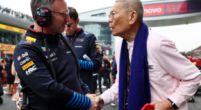Column

The strange nature of the "new team application" criteria
With interest in F1 only increasing, companies worldwide want in on the action. While some prefer the comfort of a sponsorship, others are more daring and have ambitions of team glory within the sport. Here is the strict guideline the FIA has published for these hopefuls.
The new rules
Interest in F1 has been gradually heating up over these last few months. Most of this interest has manifested in the form of team takeovers or new engine manufacturer entrants, with Audi and Ford set to join the fray come 2026. However, some have held more ambitious aims, with the most vocal interest coming from Andretti Autosport.
Due to so many rebuffs by the current teams on the grid by the ever-hopeful American team, Andretti has gone so far as to join forces with Cadillac and General Motors to establish the gravity in which they are treating a potential entry. As such, the FIA came out with a document providing what was essentially a “checklist” for any hopeful manufacturers wishing to enter the world of F1. This would help define the key steps for Andretti-Cadillac and any other interested parties as to how they can gain entry into the racing series.
View this post on Instagram
Reasoning behind key details
The deposit of a $20,000 fee is only to make sure that fraudulent applications are not created and will act as an indescribably small money gain by the FIA. The reasoning for a twelve-team limit is due to limitations calculated with prize money, as well as physical restrictions (pit boxes, grid spots, logistics, etc.). Most importantly, the proof of technical capability and resources will ensure that the entrants will perform reasonably by F1 standards and not languish far behind the pack. The “proof of experience” demonstrates that the FIA will more likely be listening to applicants boasting some form of racing/high-performance pedigree. This is so that the team will be aware of the work and consistency required to push forward and not back out on a whim.
The only possible potential criticism amongst the key points is the inclusion of a positive “societal” and “environmental” impact clause, where the candidates would have to define how they intend to achieve such targets. These key points seem vastly hypocritical, as current manufacturers are not held to such a standard. Activism by certain drivers such as Sebastian Vettel and Lewis Hamilton has been taken up by their respective teams, but there are very limited instances of teams publicly bearing such responsibilities.
The future
The window to enter and the rules paired with them have been made entirely public. There is no reason for any prospective team to have any confusion as to what the process is. The FIA has taken greater charge of the situation, drawing the power away from the existing teams on the grid. As a first stage to assess potential candidates, this process is sound as it will generally ensure that the most serious of applicants are considered.
The two successful applicants, if successful will be the very best candidates for the growth of the sport. As things stand, the future looks bright for F1.


